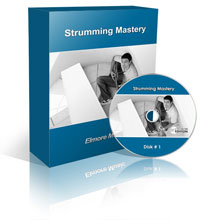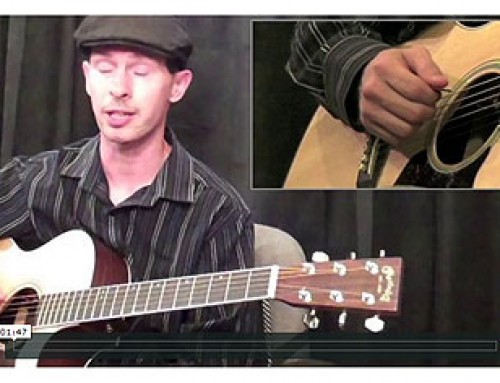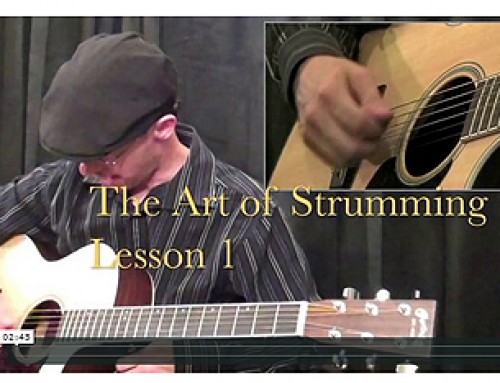If you’re hearing strumming patterns in your head that we haven’t hit on yet …
…you’ll probably find them here.
Syncopating sixteenth rhythms is very common and used in many styles of music.
The best way to achieve a natural rhythm is to practice playing straight sixteenths and while subdividing with your strumming hand, decide which strums to skip or to play.
This will also place a natural accent on these strums. Here’s an example of how you can break down your sixteenth note strumming into syllables:
1-ee-and-ah 2-ee-and-ah 3-ee-and-ah 4-ee-and-ah
Numbers and “ands” will always be downstrokes.
“ee’s” and “ah’s” will always be upstrokes.
Once you become comfortable knowing which strokes are placed on which syllables, you’ll be fine!
Try out these examples with an E chord to work on your strumming:
Example 1:
E
1-ee-and 2-ee-and 3-ee-and-ah ee ah
Example 2:
E
1 ah 2-ee 3 and 4-ee-and-ah
Want To Learn More …
 In depth strumming courses are hard to find and the free lessons available on the topic make you more confused then when you first started.
In depth strumming courses are hard to find and the free lessons available on the topic make you more confused then when you first started.
Learning to strum is a topic that needs structure and be taught in logical steps. Anyone can learn how to strum on their guitar with our easy system.
It doesn’t matter what age you are or which country you live in. The course will show you how to strum on your guitar from beginning to end
We give you our qualified tutor plus the need to know topics to help you learn quicker and with minimal stress doing so.






Leave A Comment